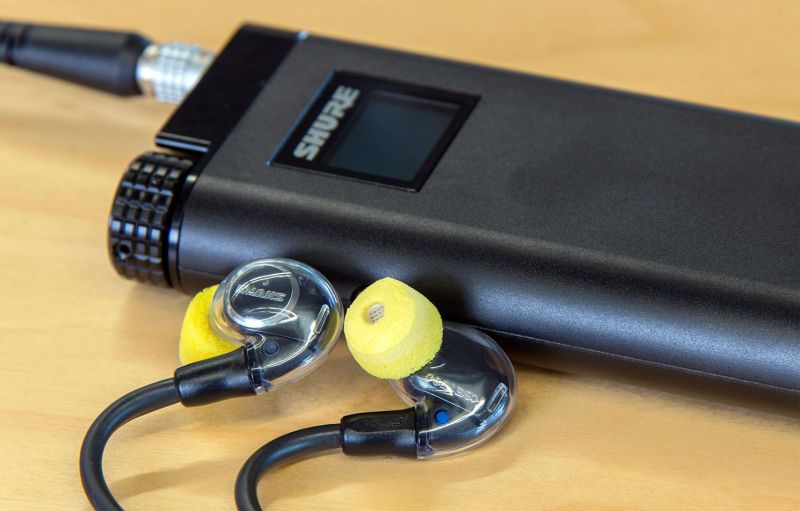
However, focusing solely on the cost — while perfectly understandable for 99.999 percent of us — really does miss the point here. After eight years spent on research and development, jumping over multiple technical hurdles and training an unrelenting eye on sonic perfection, Shure has created something extraordinary in the KSE1500. That’s because the company decided to forego traditional in-ear driver designs for the complex (and downright vexing) technological challenge of micro-sizing electrostatic transduction.
Shure isn’t the first to the punch here, but squeezing electrostatic technology into a fully self-contained package of this shape and size is tantamount to cramming a rocket thruster under the hood of a ‘97 Honda Accord. And while the KSE1500 are priced for only the most ardent audiophiles, any headphone lover can appreciate their sonic achievements. The 1500 unearth a sound marked by unparalleled clarity and transient response above, while coaxing rich and ruddy layers of velvety warmth down below, placing these ‘phones among the most elite performers we’ve ever heard.
Related: Let Shure’s SHA900 portable headphone amp take you to church
The goods
Electrostatic drivers are a bit more elegant in design than the drivers in your average headphones, composed of a razor-thin membrane suspended between two electrified plates that use static electricity (hence the name) to create sound waves. The tiny variations in voltage which power the dynamic drivers and balanced armatures you’ll find inside most headphones in the genre isn’t enough to drive them, so the signal must be highly amplified in order to move the membrane by voltage alone — hence the KSE1500’s dedicated amplifier, which applies up to 200 volts of power.
Electrostats also differ from another driver variety used heavily in hi-fi headphones, planar magnetic drivers, which are also composed of a thin membrane, but use a circuit excited by a magnetic field to create sound. Confused yet? The real takeaway here is that, in the case of both planar magnetic and electrostatic drivers, the technology is extremely complex, and is usually crafted on a much larger scale — like monster-sized, in comparison. Electrostats are what Sennheiser’s mighty new Orpheus over-ear headphones use to create sound that’s virtually un-paralleled anywhere on earth. But those are big cans! Shure has managed to micro-size the KSE1500’s electrostatic drivers to Honey-I-Shrunk-the-Kids proportions.
And that’s just one of the features that make the KSE1500 so special.
Shure claims the KSE1500 are the first ever “electrostatic sound isolating” earphones, capable of delivering a whopping 37 dB of ambient noise isolation. Indeed, with just a light twist of music, the headphones virtually erase the outside world, and even without sound, we can barely hear ourselves typing this article.
Then there’s the cable, which trades the traditional flat design of most electrostatic headphones for a round(ish) kevlar-reinforced coil that looks just like a typical headphone cable at the top. At the bottom, however, it ends in a proprietary 6-pin connector for use only with dedicated amps.
The sound
“Isolating” is a defining word for the KSE1500, and in more ways than one. Never before have we experienced such starkly delineated instrumentation across virtually every genre, apart, perhaps, from Sennheiser’s aforementioned Orpheus (priced at $50K). Vocals, saxophone, guitar, bass — you name it, each instrument is carved and polished, and the dust blown away to expose nothing less than its elemental recorded sound, and all the nuances that come along.
Conclusion
There’s no denying that Shure’s KSE1500 are a lavish pair of in-ears that only the most enthusiastic — or downright nutty — audiophiles will seek out. While the in-ears themselves are portable, being chained to a dedicated amp means you’ll always have to budget some extra space.
But there is also no denying the KSE1500 represent a monumental breakthrough in headphone technology — one that may well yield very real benefits in the form of an entirely new generation of earphones we can all enjoy, stretching beyond the KSE1500’s own lifecycle.
In the end, while our reasoned mind says we’d never spend $3,000 on an in-ear headphone, our ears convey another message: Run out and buy these — right now.
A version of this post first appeared on our “brother site” Digital Trends.


